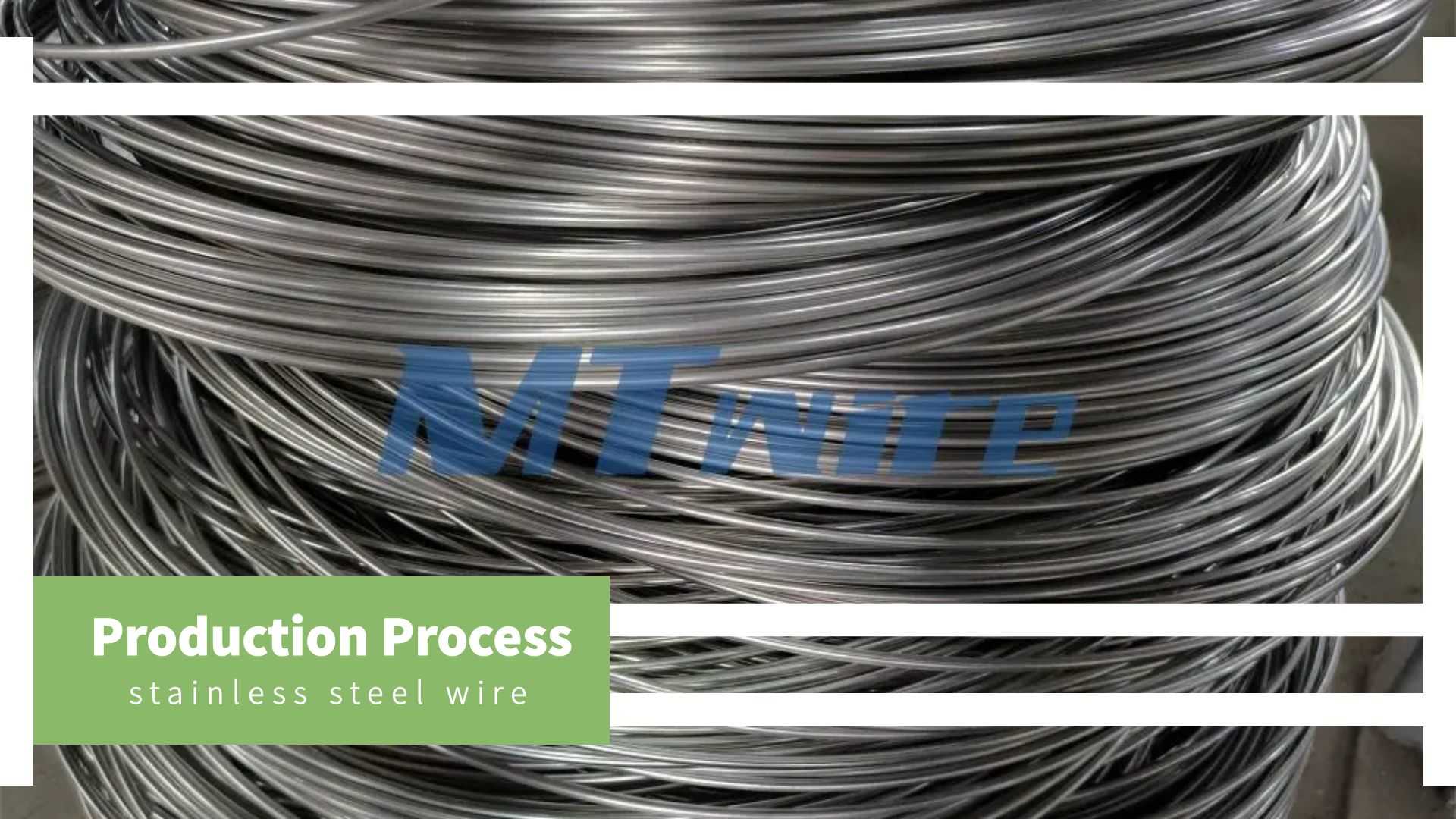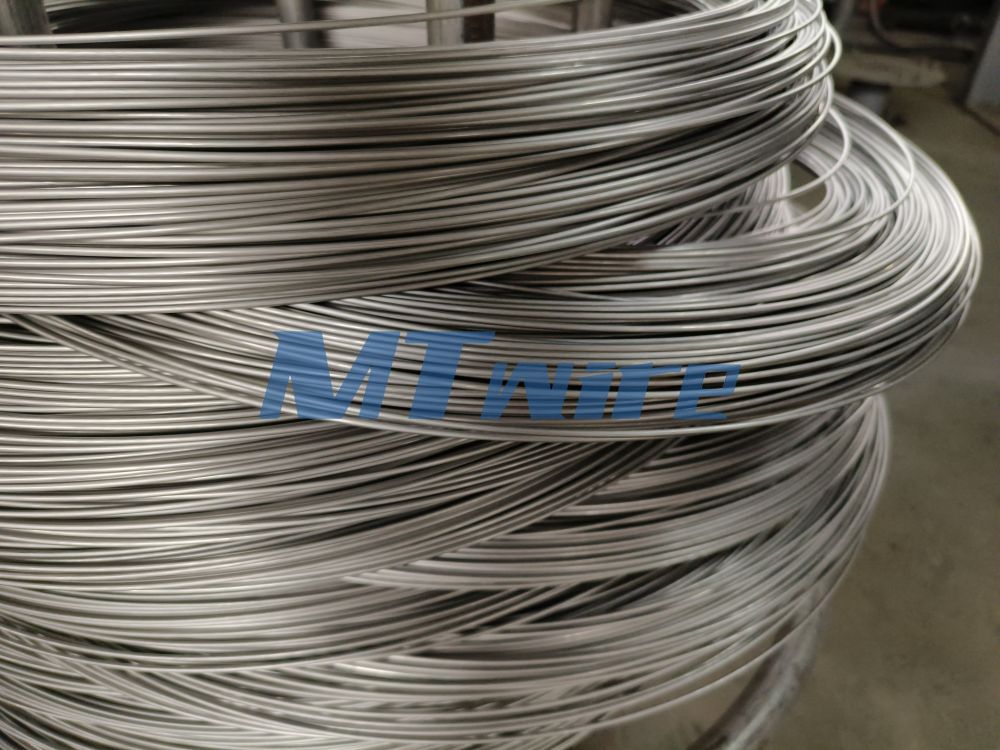Common Stainless Steel Wire Production Process


Stainless steel wire (or stainless steel products), is a limited number of rare alloying elements into the steel base, the formation of different characteristics of the product with special purposes. Improve the resource reuse of stainless steel products, with the far-reaching significance of sustainable economic development.
Stainless Steel Wire Production Process
Spooled Stainless Steel Wire Process
The production process of coiled steel wire mainly includes the following steps: firstly, coiling, then surface oxide removal, which is achieved by chemical methods. Next, drawing is carried out, followed by heat treatment, also known as solution treatment. Austenitic grades require high-temperature solution hardening at this stage, while martensite and ferrite require medium-temperature annealing. Next comes a secondary surface oxide pickling, followed by a second drawing. Finally, it is inspected, packed, and warehoused. Depending on the requirements, the delivery state can be cold drawn, lightly drawn, or soft.
Straight Stainless Steel Wire Process
The manufacturing process of straight wire is similar to that of coiled wire, but there are some differences. Firstly, it is also coiled, and then surface oxide removal is carried out, which is also carried out by chemical methods. Next, drawing is carried out, followed by heat treatment. After completing the heat treatment, a secondary removal of the oxide skin is also carried out. Next comes oil drawing, a step that involves light drawing at small compression rates, mainly through lubricants. This is followed by straightening, cutting to length, and polishing. Finally, inspection, packaging, and warehousing are carried out.
Main Processes
Stainless steel wire production mainly consists of surface pickling, drawing, and heat treatment of three processes. 3 processes repeat the production process, the process is selective, divided into large plate weight (high-speed rolling) and small plate weight (250 mills rolling), in order of austenite, martensite, ferrite stainless steel species with different organizations, which can be changed in the process.
Pickling Process
A simple and economical pickling method is the conventional chemical method. Stainless steel oxide skin by different alloying elements, the removal degree of difficulty is also different, with a simple and single chemical method can not be removed, so the combination of pickling methods to remove.
The combined pickling method is more serious pollution, wastewater treatment is also more complex. During the production process, the acid will produce harmful gases to pollute the air, and wastewater will pollute the groundwater. For large-scale raw material production enterprises, the use of online automated surface cleaning and wastewater and hazardous gases without pollution centralized treatment; while in the end product of many small enterprises, unable to take the ability and economy of effective treatment, the formation of a full distribution of pollution sources.
Drawing Process
In order to achieve smooth drawing (deformation), it is necessary to reduce the friction between the steel wire substrate and the mold wall. Adopt carrier (coating) lubrication technology. Stainless steel wire is difficult to form a solid coating due to the stable surface chemistry and the lack of chemical reaction with the coating, and it is often operated by mechanical methods, such as hanging lime, adsorption, and crystallization. There are oil lime, lime slurry, salt lime, oxalate coating colloidal graphite, etc., after the de-watering process and the formation of thin films. Lubricants are divided into dry and water, dry calcium and sodium, water sodium, colloidal graphite, and liquefied paraffin. The steel wire surface is de-coated before it becomes a product. Pollution from drawing is the pollution of the working environment.
Heat Treatment Process
Stainless steel wire in the non-vacuum heat treatment furnace for annealing (solution) treatment, the surface of the high-temperature oxidation occurs, because stainless steel is composed of several alloying elements, each alloying element of the oxidation capacity of different, resulting in different degrees of oxidation, resulting in uneven oxidation of the surface, affecting the quality of the surface of the stainless steel wire, resulting in uneven tolerances, pitting and pockmarking and other defects. Resulting in an invisible loss of alloy, a waste of resources.
Summary
The stainless steel wire production process is fine and complex, whether it is disc-shaped or straight steel wire, needs to go through the disc, removal of oxide skin, drawing, heat treatment, and other key steps. Complemented by chemical pickling, heat treatment, and other technologies to ensure quality. In the austenitic, martensitic, ferritic, and other different organizations of stainless steel species, the heat treatment process needs to be cleverly adjusted to meet different needs. Although the process encounters challenges such as environmental pollution, the impact is effectively reduced through online automated surface cleaning and pollution-free centralized treatment solutions. The whole process fully embodies the concept of sustainable economic development, and through the reuse of limited rare elements, various types of stainless steel products are constructed to meet diversified market demands.
